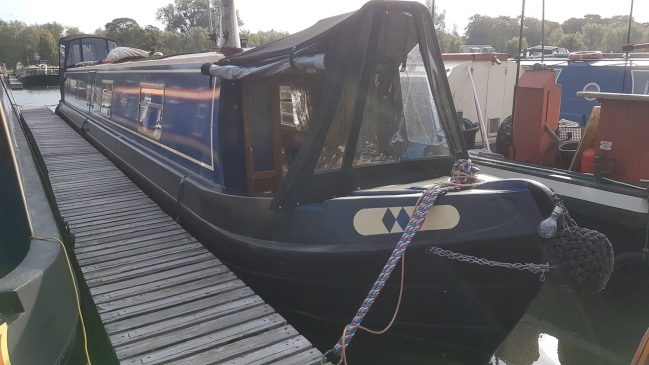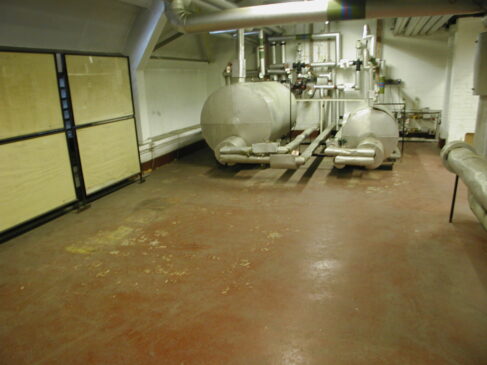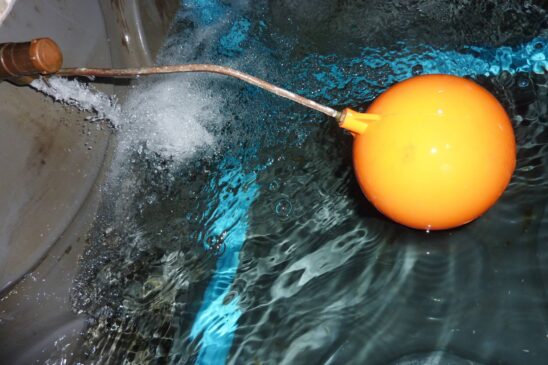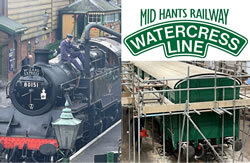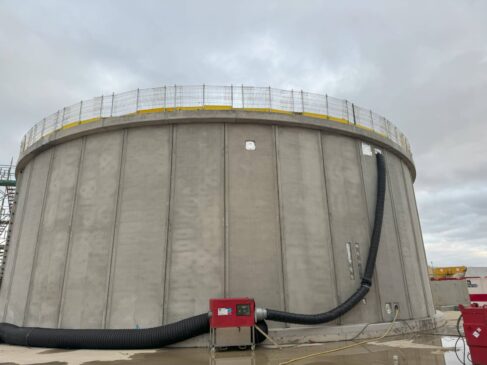Super Yacht: Hot Water Tank Lining
A chief engineer of a super yacht undergoing a refit at a shipyard located in the Mediterranean commissioned us to work on a marine tank lining project.
The Client
We were instructed to reline three carbon steel tanks (marine calorifiers), which were used in the production and storage of hot water for general use aboard the motor yacht. We have worked on several super yachts over the years and for reasons of client confidentiality we are unable to disclose information about them or the specialised coatings works undertaken
Challenges
- The tanks had to withstand elevated water temperatures of up to 70°C.
- The temperature of the room was around 30°C, which affected the order in which the coats had to be applied.
- Areas of deep corrosion existed on the nozzle flange faces.
Solution
As the lining of these tanks was to be potable water approved for hot water use and capable of withstanding elevated water temperatures of up to 70°C, we recommended using a specially developed glass flake reinforced resin-based tank lining system. This had international potable water and food contact approval for both hot water and high temperature use.
To reduce costs for our client, we advised that the tanks ought to be abrasive grit-blasted by a local company operating in the shipyard. We then made a detailed inspection of the quality of blasting and had areas re-blasted if they were not completed to the required standard. After the tanks were cleaned and all traces of spent abrasive removed, we applied the new tank lining.
With the proposed tank lining material, we would normally expect to apply one coat to each of the three tanks during a working day, with the next coat being applied on day two and the final coat on day three. However, due to the high working temperatures within the room, this method would have resulted in us missing the over-coating window for the resin. The resin would have hardened too much to accept another coat without re-abrading the surface of the previous coat.
We therefore changed the pattern of work to apply all coats of the lining material to one tank at a time during a single working day.Areas of deep corrosion on the nozzle flange faces were infilled with a paste version of the same resin tank lining material. After hardening, the surplus material was removed and the flange face smoothed flat ready for refitting. Following the completion of the lining application works and as part of our quality control system, which involves checking the thickness of the tank lining during and after application, we additionally test for the absence of any holes or micro-porosity in the coating material.
The device used for this is known as a Holiday Detector, which is a safe to use, high voltage test designed to detect even the smallest hole in the applied coating.We tested 100% of the new lining at a voltage calculated for the lining type and thickness. The test was carried out on all the main surface areas of the tank and included inside nozzles, flange faces, behind brackets and so on, to check for the absence of holes or micro-porosity in the lining. Any areas found defective were repaired and re-tested. Many companies do not carry out micro-porosity checks. We consider it a vital part of our tank lining process and this, together with selecting the best materials for the project, is how we are able to give real-life expectancies for the completed works.
The Results
Following application, we fully tested all three tank linings for overall thickness and absence of micro-porosity. The risk of secondary corrosion forming within the tanks was avoided due to the low humidity in the room where the tanks were located.
After the curing and hardening period had elapsed, the tanks (calories) were returned to normal service. We completed our project two days ahead of the expected schedule and within budget.






